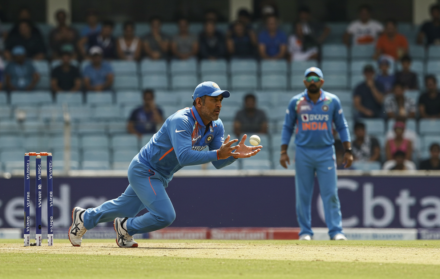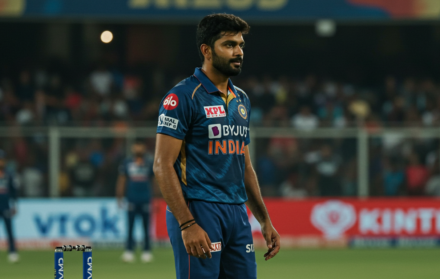
The Future Of Cricket: Challenges & Opportunities In A Changing Landscape
Cricket, a sport deeply rooted in history and adored by millions around the world, has undergone significant evolution over the years. As we look towards the future, several trends are shaping the path that cricket will take. From technological advancements to the globalization of the game, and from increased participation of women to embracing diversity and inclusion, the future of cricket holds both challenges and opportunities.
Balancing tradition with innovation, addressing match-fixing and corruption, expanding the fan base, and ensuring financial stability are just a few of the hurdles that need to be overcome. As we explore the future of cricket, predictions and speculations emerge regarding technological innovations, changes in formats and rules, growing global competitiveness, and the broadening of cricket’s appeal beyond traditional strongholds.
So, what lies ahead for the beloved sport of cricket? Let us explore the exciting possibilities that await.
Overview of Cricket’s History and Popularity

Cricket‘s rich history and popularity have shaped it into one of the world’s most beloved sports. Providing an overview of cricket’s history and popularity, it originated in England during the 16th century and has since grown into a global phenomenon.
This sport’s iconic matches like the Ashes and the World Cup highlight its storied past. Furthermore, the immense popularity of cricket is evident through its large fan base and the intense rivalries it fosters between teams, exemplified by the heated competition between India and Pakistan.
As cricket continues to evolve, it is crucial to preserve its traditions while embracing modern technology and formats. Suggestions for the future of cricket include expanding its reach to new markets and enhancing fan engagement through digital platforms. By incorporating these changes, cricket can further solidify itself as a sport that combines its rich history with modern advancements.
The Evolution of Cricket
Cricket, an age-old sport with a fascinating history, has undergone a remarkable evolution. Join me on a journey through time as we uncover the early beginnings of cricket and witness its incredible transformation into a global phenomenon.
From humble origins to worldwide acclaim, we will explore how cricket has transcended boundaries, transcended cultures, and become a beloved sport cherished by millions around the globe. Get ready to explore the captivating story of cricket’s evolution.
Early Beginnings of Cricket
The early beginnings of cricket trace back to the 16th century in rural England. It started as a simple game played by shepherds, who used their crooks to hit a ball made of wool or rags. Over time, the game gained popularity and evolved into a more organized sport.
The first known reference to cricket dates back to 1598, and by the 18th century, cricket had become a popular pastime for the gentry. The Marylebone Cricket Club(MCC) was established in 1787 and played a major role in formalizing the rules of the game. From these humble origins, cricket has grown into a global sport with millions of fans worldwide.
Globalization of Cricket
Cricket has witnessed significant globalization in recent years. It has expanded its reach beyond traditional strongholds to new regions where cricket was once unheard of. With increased exposure through international tours and competitions, and the development of cricket leagues in different countries, the globalization of cricket has brought together teams from diverse cricket-playing nations.
This has not only broadened the appeal of cricket but also highlighted the sport’s potential to unite people from different cultures and backgrounds. As cricket continues to globalize, it provides opportunities for players, fans, and the sport itself to thrive on a global scale.
Trends Shaping the Future of Cricket

Cricket’s future is anything but predictable. As we dive into the trends shaping the game, brace yourselves for the technological advances dishing out jaw-dropping spectacles. Meanwhile, the allure of the T20 format lures more fans with each passing match, propelling cricket into new realms.
Women’s participation soars to unprecedented heights, transforming the game’s landscape, while a newfound emphasis on diversity and inclusion opens doors to unexplored talent. The path ahead promises excitement and innovation, forever altering the course of cricket’s evolution.
Technological Advances in Cricket
Technological advances in cricket have revolutionized the game, greatly enhancing the performance of players and the experience of viewers. The introduction of innovative technologies has significantly improved decision-making in various aspects of the sport. Implementation of technologies in cricket includes:
- Hawk-Eye: This state-of-the-art ball tracking technology has played a pivotal role in empowering umpires to make accurate decisions regarding LBW appeals and line calls.
- Ultra Edge: By utilizing cutting-edge audio technology, this system has successfully minimized inaccuracies in decision-making by precisely detecting edges.
- Virtual Reality: The integration of VR technology has enabled fans to immerse themselves in matches by experiencing them from the player’s perspective, thereby delivering an interactive and captivating viewing experience.
- Snickometer: This remarkable technology utilizes audio signals to detect even the faintest of edges, thus facilitating umpires in making correct decisions.
- Player Tracking: Technological advancements such as wearable sensors and GPS tracking devices have provided comprehensive data on player performance, fitness, and injury prevention.
These technological advancements have significantly improved the accuracy of decisions, elevated the viewing experience for fans and have played a vital role in the overall development and progress of the sport.
Growing Popularity and Expansion of T20 Format
The T20 format in cricket has witnessed a remarkable surge in popularity and global expansion.
- Growing fan base: The fast-paced nature of T20 matches, with matches lasting around three hours, has captivated a wider audience, including younger viewers and those with limited time.
- Increased participation: The T20 format has provided an opportunity for more players to exhibit their skills and engage in the game, leading to the proliferation of domestic T20 leagues worldwide.
- Entertainment value: The shorter format highlights excitement, with an abundance of boundaries, powerful hits, and thrilling finishes, making it alluring to both passionate fans and casual viewers alike.
- International tournaments: The triumph of events like the Indian Premier League and T20 World Cup has further contributed to the growth and popularity of the T20 format, attracting top players from across the globe.
- Marketability: The T20 format has captured the attention of sponsors and broadcasters, enabling increased investment and exposure for the sport.
Increased Participation of Women in Cricket
Increased participation of women in cricket is crucial for the growth and development of the sport. Here are some factors contributing to this increase:
- Supportive Programs: The establishment of women’s cricket leagues and development programs has provided opportunities for female players to showcase their skills. This has resulted in an increased participation of women in cricket.
- Media Coverage: Increased media coverage of women’s cricket has helped raise awareness and promote the sport, inspiring more girls and women to get involved. This increased media coverage has contributed to the increased participation of women in cricket.
- Institutional Support: More cricket boards and governing bodies are investing in women’s cricket, providing resources and infrastructure to cultivate talent. This institutional support has played a significant role in promoting the increased participation of women in cricket.
- Inclusive Policies: The implementation of initiatives to eliminate gender disparities, such as equal pay and access to training facilities, has encouraged women’s participation in cricket. These inclusive policies have contributed to an increase in women’s participation in the sport.
- Role Models: The success of female cricketers, like Mithali Raj and Ellyse Perry, has served as inspiration for young girls, encouraging them to pursue cricket as a career. The presence of such role models has led to an increased participation of women in cricket.
Embracing Diversity and Inclusion in the Game
Embracing diversity and inclusion in the game of cricket is crucial for its growth and development. Here are several ways in which cricket can promote diversity and inclusion:
- Promote equal opportunities: It is essential to ensure that players from all backgrounds have access to training facilities, coaching, and opportunities in the game. To achieve this, it is important to encourage talent scouting programs in underrepresented communities.
- Support women’s cricket: An investment in women’s cricket is necessary to provide equal resources, funding, and exposure to women’s teams. By doing so, cricket can promote gender equality within the sport.
- Encourage representation: It is vital to encourage diversity within coaching and administrative staff, as well as in leadership positions. This will help create a more inclusive environment for players from diverse backgrounds.
- Challenge stereotypes: The game should actively challenge stereotypes based on race, nationality, or gender. It needs to promote fair treatment and acceptance of all players, regardless of their background.
- Promote cultural awareness: It is important to celebrate and respect different cultures and traditions within cricket. Organizing events that showcase the diversity of cricket can help achieve this goal.
By embracing diversity and inclusion, cricket can become a more inclusive and representative sport for all individuals, regardless of their background or identity.
Challenges and Opportunities in Cricket’s Future

Cricket’s future is ripe with both challenges and opportunities that demand our attention. From striking the delicate balance between tradition and innovation to addressing the lingering concerns of match-fixing and corruption, the game faces complex obstacles.
Expanding the global fan base and ensuring financial stability are crucial aspects that cannot be overlooked. This section takes a closer look at these pertinent issues to guide us through the path cricket chooses to tread in the days to come.
Balancing Tradition and Innovation
While the game of cricket has a rich history and tradition, it is crucial to strike a balance between tradition and innovation to ensure its future success. Balancing tradition and innovation can help attract a younger audience and keep the game relevant in a rapidly changing world.
This can include incorporating technologies like DRS (Decision Review System) to enhance umpiring accuracy or introducing shorter, more dynamic formats like T20 cricket. It is also essential to preserve the essence of the game and respect its traditions, thus maintaining the delicate balance between tradition and innovation will be crucial in shaping the future of cricket and maintaining its global appeal.
Addressing Match-Fixing and Corruption
To ensure the integrity and fair play of cricket, it is crucial to address match-fixing and corruption. This entails the implementation of strict regulations, conducting thorough investigations, and imposing severe punishments on individuals involved in such activities.
In order to detect and prevent any illegal activities, cricket boards and governing bodies must collaborate closely with law enforcement agencies and anti-corruption units. Essential to creating a culture of transparency and honesty within the sport is educating players, officials, and stakeholders about the consequences of match-fixing and corruption.
Through these proactive measures, cricket can maintain its reputation as a fair and trustworthy game.
Expanding the Fan Base and Global Reach
Expanding the fan base and global reach is of utmost importance for the future of cricket. To accomplish this goal, it is crucial for cricket authorities to concentrate on various factors.
Attracting new fans and players can be achieved by promoting the game in non-traditional cricket-playing countries. This can be done by investing in grassroots programs, organizing international matches in diverse locations, and broadcasting matches worldwide.
Furthermore, leveraging social media platforms and digital streaming services can significantly enhance the accessibility of the sport, enabling fans from all around the world to actively participate.
By enlarging the fan base and extending its global reach, cricket can firmly establish itself as a truly international sport.
Fact: The 2019 Cricket World Cup, with over 1.6 billion individuals tuning in globally, witnessed the highest viewership ever recorded for an ICC event.
Ensuring Sustainability and Financial Stability
Ensuring sustainability and financial stability is crucial for the future of cricket. Here are some key factors to consider:
- Developing revenue streams: Cricket boards should prioritize diversifying revenue sources, such as broadcasting rights, sponsorships, and merchandise sales, to ensure sustainability and financial stability.
- Investing in grassroots cricket: Nurturing young talent from an early age is imperative for long-term success and the financial stability of cricket. This includes investing in coaching programs, infrastructure, and school-level cricket.
- Managing costs: It is essential for cricket organizations to effectively control expenses and allocate resources efficiently, ultimately ensuring financial stability and sustainability.
- Expanding the fan base: The attraction of new fans and the engagement of existing ones play a vital role in securing the financial stability and sustainability of cricket. This can be accomplished through well-planned marketing campaigns, innovative fan experiences, and inclusive initiatives that cater to diverse communities.
- Building strong partnerships: Collaborating with corporate entities, governments, and other sports organizations can offer financial support and stability, thereby contributing to the sustainability and financial stability of cricket.
The Future of Cricket: Predictions and Speculations

Cricket’s future is full of excitement and anticipation as we delve into predictions and speculations. From technological innovations on the field to changes in formats and rules, the sport is poised for significant transformation.
With growing global competitiveness and a push to broaden cricket’s appeal beyond its traditional strongholds, the future holds endless possibilities. Strap on your pads, grab a seat, and get ready to explore the thrilling prospects that lie ahead in the world of cricket.
Technological Innovations on the Field
Technological Innovations on the Field have revolutionized the game of cricket, significantly enhancing both player performance and fan experience. Notable advancements include the introduction of ball-tracking technology, such as Hawk-Eye, which accurately predicts the trajectory of the ball.
Additionally, high-speed cameras have been incorporated to capture crucial moments, thereby aiding in decision-making during tight situations. Wearable technology has also made its mark by allowing players to effectively monitor their fitness levels and optimize their training routines.
Another pivotal innovation in the game is the Decision Review System (DRS), which ensures fair play and significantly reduces human error in umpiring decisions. It is evident that these Technological Innovations on the Field continue to play a crucial role in shaping the future of cricket, making the game more precise and engaging for players and spectators alike.
Changes in Cricket Formats and Rules
Cricket has undergone significant changes in its formats and rules over time in order to enhance the game’s dynamism and appeal to a broader audience. Several key modifications have been implemented, including:
- Introduction of limited-overs formats: One Day Internationals (ODIs) and Twenty20 (T20) cricket have emerged, introducing faster-paced matches that focus more on power-hitting and entertainment.
- New playing conditions: Exciting elements such as the Powerplay overs, fielding restrictions, and the Decision Review System (DRS) have been added to the game, increasing both excitement and fairness.
- Shortened formats: The immense success of T20 cricket has spurred the creation of new and shorter formats like The Hundred, attracting a diverse and casual fan base.
- Rule modifications: Innovations such as the Super Over for tied matches and the introduction of pink-ball Test matches have revitalized traditional formats, promoting more thrilling sporting contests.
These transformative changes have been aimed at making cricket more accessible, fast-paced, and engaging for both players and fans. As a result, cricket continues to enjoy immense popularity and is poised for further growth in the future.
Growing Global Competitiveness
Growing global competitiveness is becoming a significant trend that is shaping the future of cricket. As the sport gains more popularity around the world, countries are investing in their cricket infrastructure and talent development programs.
Notably, emerging cricket nations such as Afghanistan, Ireland, and Nepal are making remarkable strides, posing challenges to the traditional powerhouses. This surge in competitiveness has resulted in more thrilling and closely contested matches, captivating a larger global audience.
To maintain this unprecedented growth, cricket’s governing bodies should consistently provide support and resources to these nations, promoting equal opportunities and ensuring a level playing field. Moreover, fostering international partnerships and organizing more competitive tournaments can further enhance the sport’s global competitiveness.
Broadening Cricket’s Appeal Beyond Traditional Strongholds
Broadening cricket’s appeal beyond traditional strongholds is crucial for the future growth and development of the sport. This involves expanding the fan base and attracting new viewers in regions where cricket is not traditionally popular.
Efforts should be made to promote the game in non-traditional cricket-playing countries, invest in grassroots development programs, and organize international tournaments and matches in new locations. By embracing diversity and inclusivity, cricket can become a global sport with a broader reach.
Fact: The International Cricket Council (ICC) has been actively working towards promoting cricket in non-traditional regions, such as the USA, Canada, and the Gulf countries, to broaden the sport’s appeal.





